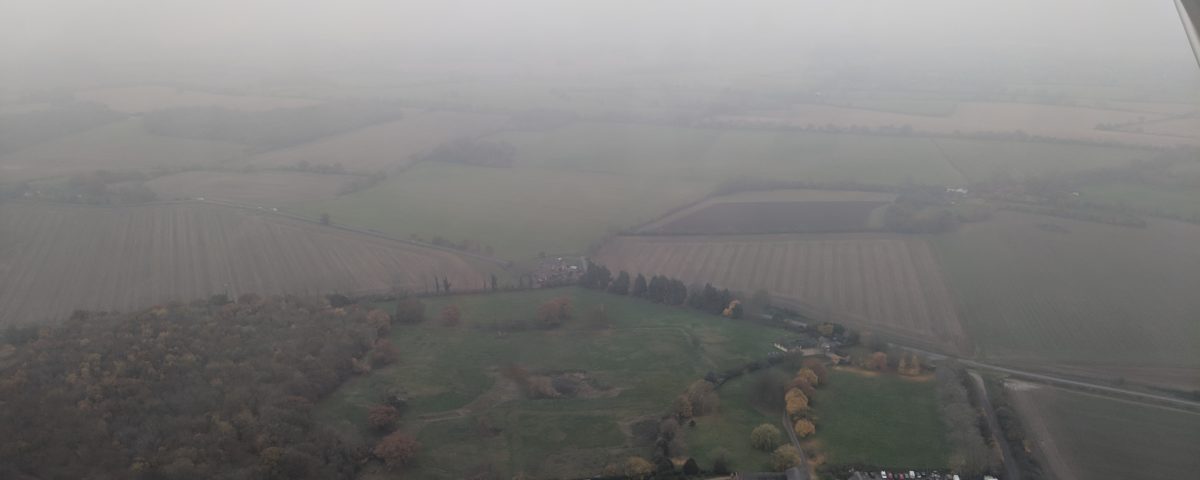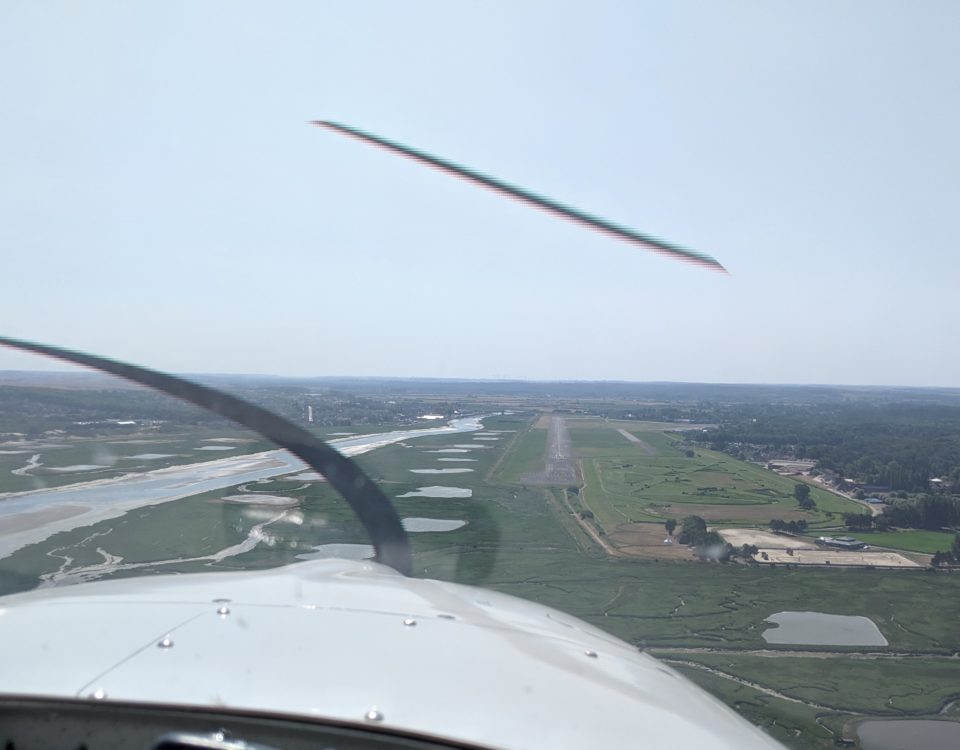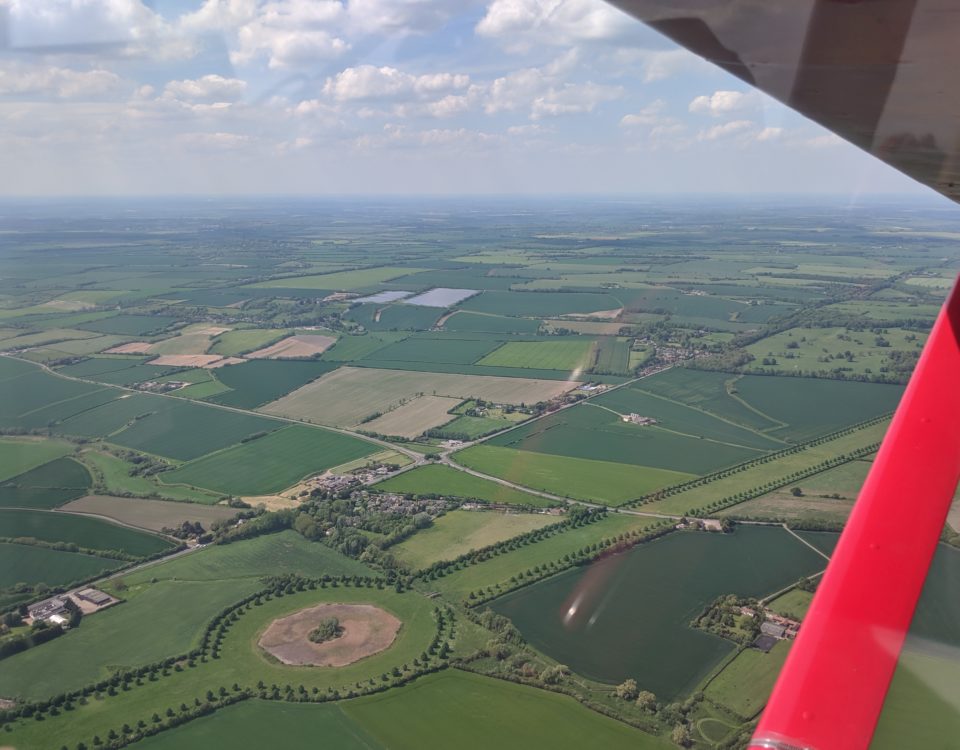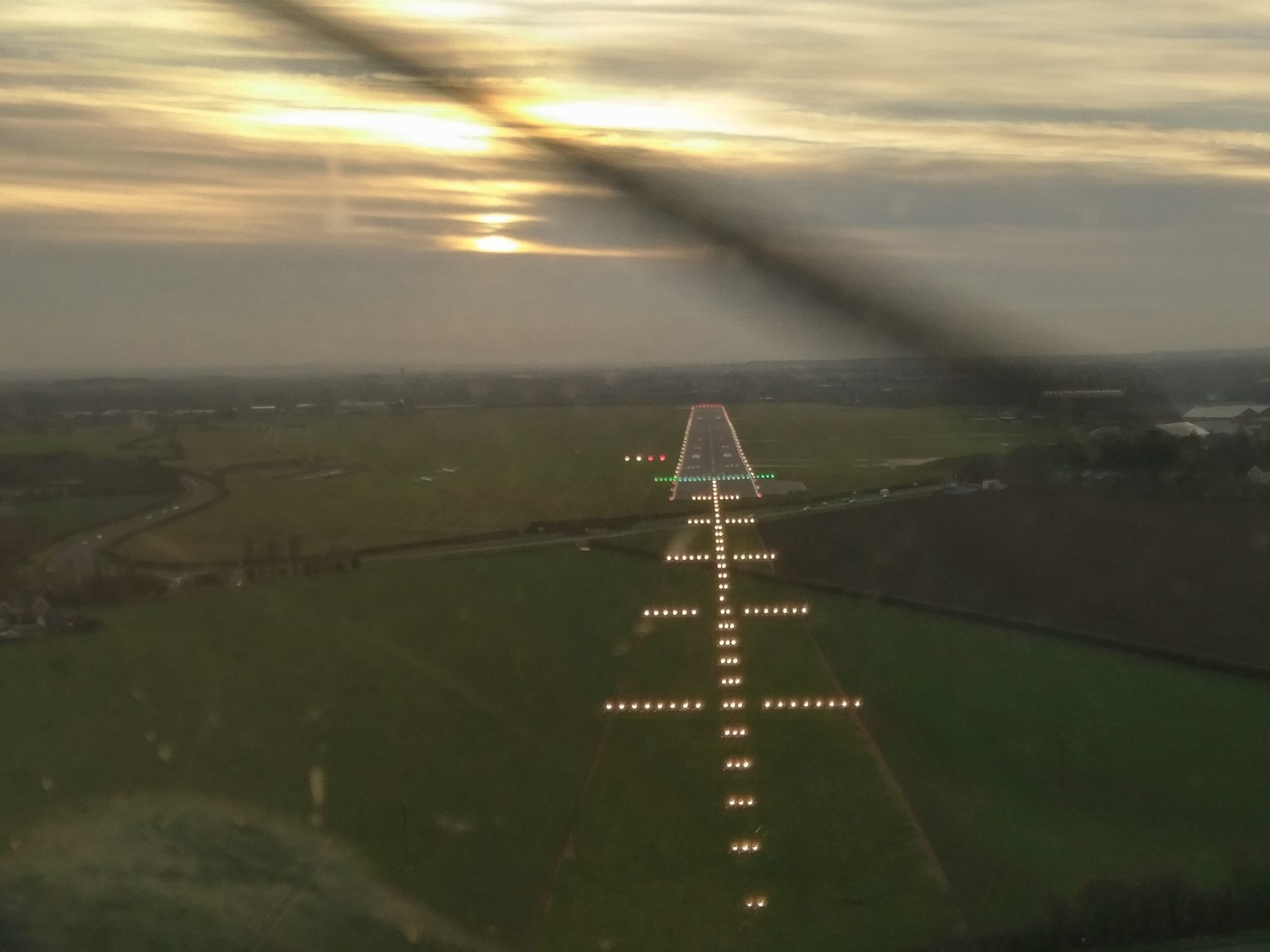
A perspective on runways
November 16, 2018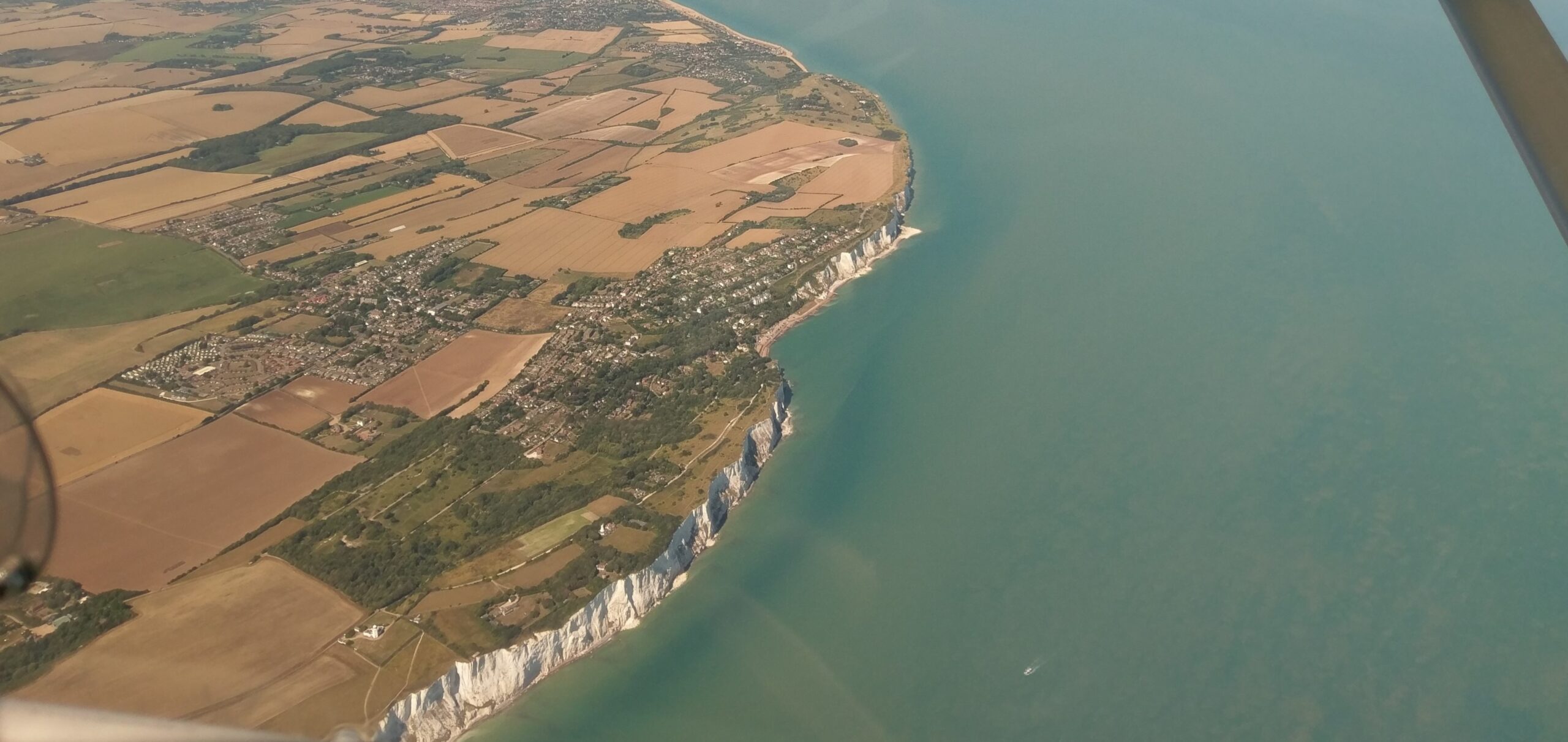
Finally flying to France
December 14, 2018A magical mist-ry tour: a cautionary tale
“November is the worst month for fog and mist,” said the CFI. “You wait and see!” I didn’t have too long to wait before James and I were heading back to an airfield so shrouded in mist we had been advised to avoid the pylons on our normal route and come straight in over the village.
It wasn’t lack of planning, or gung-ho flying. It was supposed to be the best flying day of the week. Minimal wind from the south, warm and overcast. A single trip had mushroomed into something of a club flyout, and we were meeting a pilot from another airstrip too. There was a lot of liaising of timing and who would take off first. The Skydemon route indicated under 40 minutes there, over an hour return, so we knew we had a headwind. I had checked the weather the night before, and that morning, and the forecast was all clear. Perhaps there would be some mist drifting in after 3pm, so we knew we had to be back well before then.
Things didn’t go quite according to plan. We had a blue sky overhead as we drove to the airfield, but the other pilot – another John – was texting to say it was not yet flyable where he was. Fingers crossed we agreed, let’s see closer to our take-off time. I suggested that we PPR at Old Warden, just in case we decided not to fly as far, but it was sunny at Deenthorpe, our destination airfield. The CFI had texted from his lesson that the weather was good. He’d been halfway along our track up north, and the sky was clear.
The other two aeroplanes took off and we lined up. I looked south at a thick band of grey cloud and frowned. It had been gorgeous and sunny the day before. This didn’t bode well. As we headed out, I looked back and wondered if we wouldn’t be flying home to mist and rain. It didn’t look great weather to go anywhere in. “I’m not happy,” I said to James. “It’s clearing,” he reassured me. I knew I didn’t want to chicken out and spoil everyone else’s day, so I just thanked my lucky stars he was P1. The others were checking on their position as we overtook them. “You guys okay?” asked Dan on the radio. “I think we should go back,” I said to James, just as the skies broke through with the promised clear blue. Perhaps I was being foolish after all. “How about we do a precautionary landing at Old Warden, and see how things look?” suggested Dan. We switched to their frequency.
Sitting outside in the sunshine, with a clear blue sky above us now, the pilots ordered lunch. I fretted about a text the CFI has just sent saying, “I would come back if I were you”. “Hope you have your credit card handy,” said another pilot at our home airfield to Dan. “We can’t see the pylons here right now.” They were always our marker as to visibility. I called the CFI to find out what he thought we should do. “Stay put and let’s see if it improves,” he suggested. “At worst, I can always drive up and fetch you.” “It’s the warmest time of the day,” said James, “this should all clear.” “But if it doesn’t, we’re losing light,” I argued. “We have lots of options of airfields to land in along the way,” said Dan, “why not go and see if we can get closer to home. It is clear here, we could always come back here.” It was only 12.30, and not easy to think of how impossible the weather was in the little pocket around our airfield when the sun above us was beating down from a blue sky.
The other John had also had blue sky, but then it clouded over where he was, up north. “Think I’ll bin it for today,” he said. “Always another day, eh?” Indeed, very wise words.
I knew I wanted to head back as soon as possible. By now, Stansted was reading a temperature and dewpoint just one degree different. Luton and Stansted were both IFR, but Cambridge, the closest airport to Old Warden, was still VFR. Surely we could fly south and if we couldn’t get home, we could always turn around and head north again.
“Just enjoy it,” the CFI said. “It’s what November is about, and it’s an experience!” If I had answered him then, it would have been unprintable. It was an experience though. One I would prefer not to repeat any time soon, and I was very relieved I was crew not pilot myself. I had heard about sideways visibility, but not seen it before. We took off and headed south over the wind turbines. Almost immediately it felt as if we had re-entered a sea of gloom and mist.
James was flying lower than usual, but still at 1200ft above ground. My eyes were glued to the Skydemon track and the compass heading we were on, in case we lost the GPS signal. We were the fastest plane, and ahead of the others, but actually the prospect of turning around now seemed crazy, as we could find it had clagged up there, and we could be on a collision course with the rest of our team. Pressing on seemed the best course of action.
The mist swirled past and around us, but always looking out of the side we could see the landmarks we knew quite clearly. The others were flying lower than we were, and there was a point where the fog seemed thicker, but as I was about to ask James to come down lower he had taken us to 1000ft. It was an eerie experience, and a very long half hour. There wasn’t even time to wish we had never come out. There was only the sheer concentration of getting us back safely. I looked at fields as we flew, assessing them for landing, but at no point did it feel that we were in any danger. Talk was minimal. We both were quite calm and getting back didn’t seem impossible at all. Later James said he never thought about what field we may land in, as all his mental capacity was focused on flying, and spending energy on an ever-changing target would have been a waste of time. He seemed to drift off course at one stage, but in fact he was keeping our landmark water tower on one side and a road on the other, so that he could find his way without the GPS. We also knew we had a string of options of other nearby airfields we knew well, where we could land if we needed to do so.
As we turned towards our airfield, visibility suddenly decreased significantly, even though it was always still above the legal 1.5km. We made our radio calls and James was going to track in along our regular path. “I am sure we could cite poor visibility as a reason to miss the pylons and go straight in,” I suggested, but he felt it would be best to stick to the route he knew best. We got a relieved call from the airfield telling us to come straight in, and as the fields presented themselves at a lower height than we are used to, and I puzzled as to whether those were the barns where we turn or simply farms we don’t normally see, I understood that both methods had their advantages, the known and the more direct.
Then there were some anxious minutes as we waited for the others to land safely, before settling back into a clubhouse cuppa. We heard about other local flights that had got caught out as well, and not been able to return to their home bases, and Ed told us he had looked up from a desk at Stansted when the weather had been clearing and suddenly found the fog had come in. It was very localised, as other pilots elsewhere were delighted by a glorious day’s flying.
The weather at our airfield didn’t get better that day, but I was happy later to go up with the CFI and fly myself in those conditions, so that had I been flying another time, I would not have panicked.
What did I learn that day?
Staying calm and keeping a clear head in challenging conditions is the most important. You and your aircraft will land, but you can do a lot to ensure that it is safely.
You are P1. It doesn’t matter what anyone else says or thinks. When the aeroplane is aloft, it is you who must get it down.
So when in doubt, there is no doubt. Another time, I would have requested we turn back much earlier. Talking to other pilots, there is massive peer pressure, especially when you have arranged an outing. While I was hoping someone else would call it off, the new pilot later said to me, “But you were the pathfinders, we were relying on you!”
Carry a credit card and money with you at all times, as well as clothing suitable for the weather. You really never do know where you will end up, even when it’s a local flight and your aircraft has a heater.
The critical factor in predicting fog is when temperature and dewpoint are the same. That should make red lights flash in your pre-flight planning.
However much you study the weather, accept they can – and do – get it wrong. Make sure there is always another day to fly.
For further reading, here is a link to the CAA’s Guide to Visual Flight Rules in the UK: https://www.bfgc.co.uk/VFR_Guide.pdf

